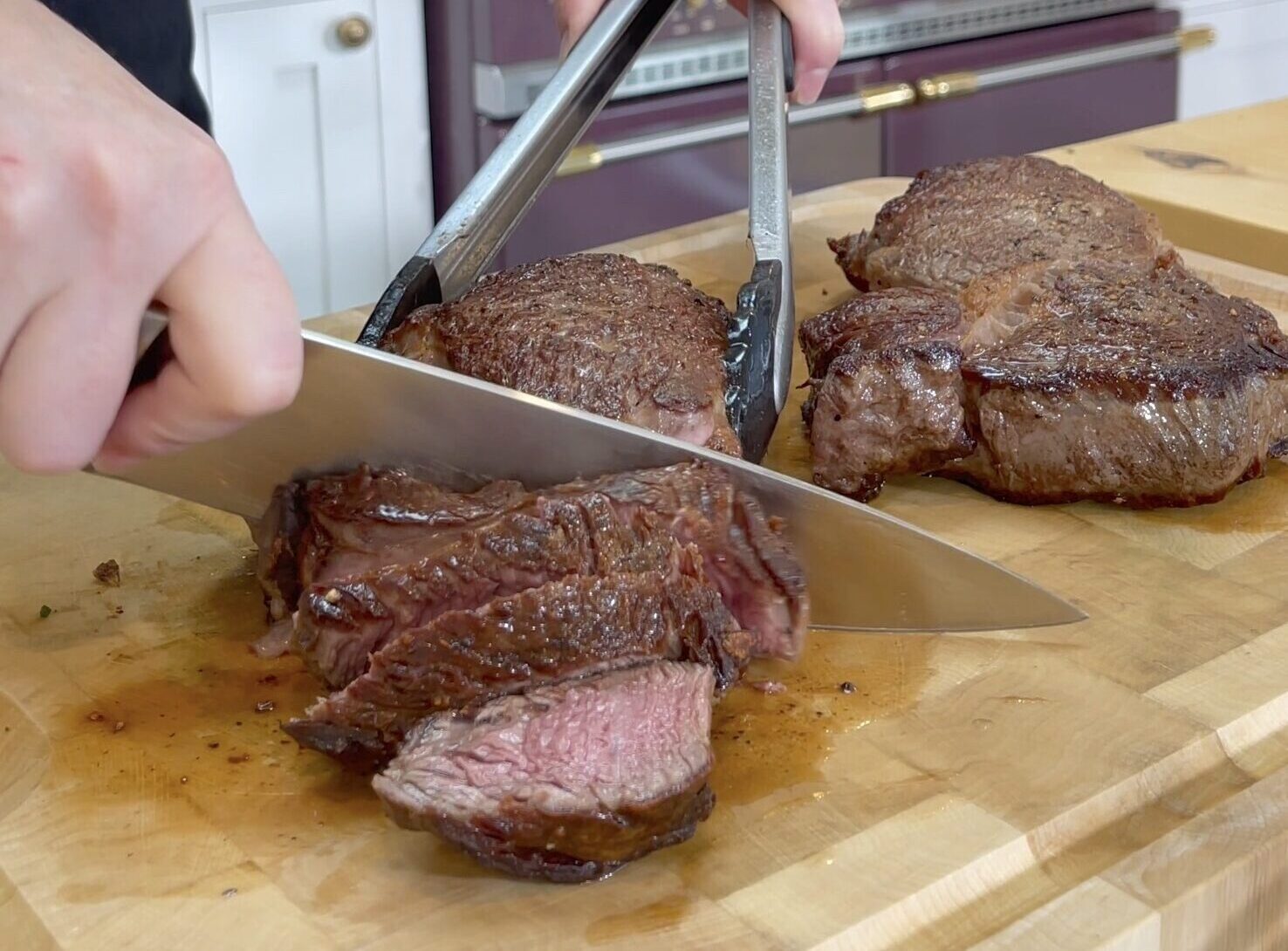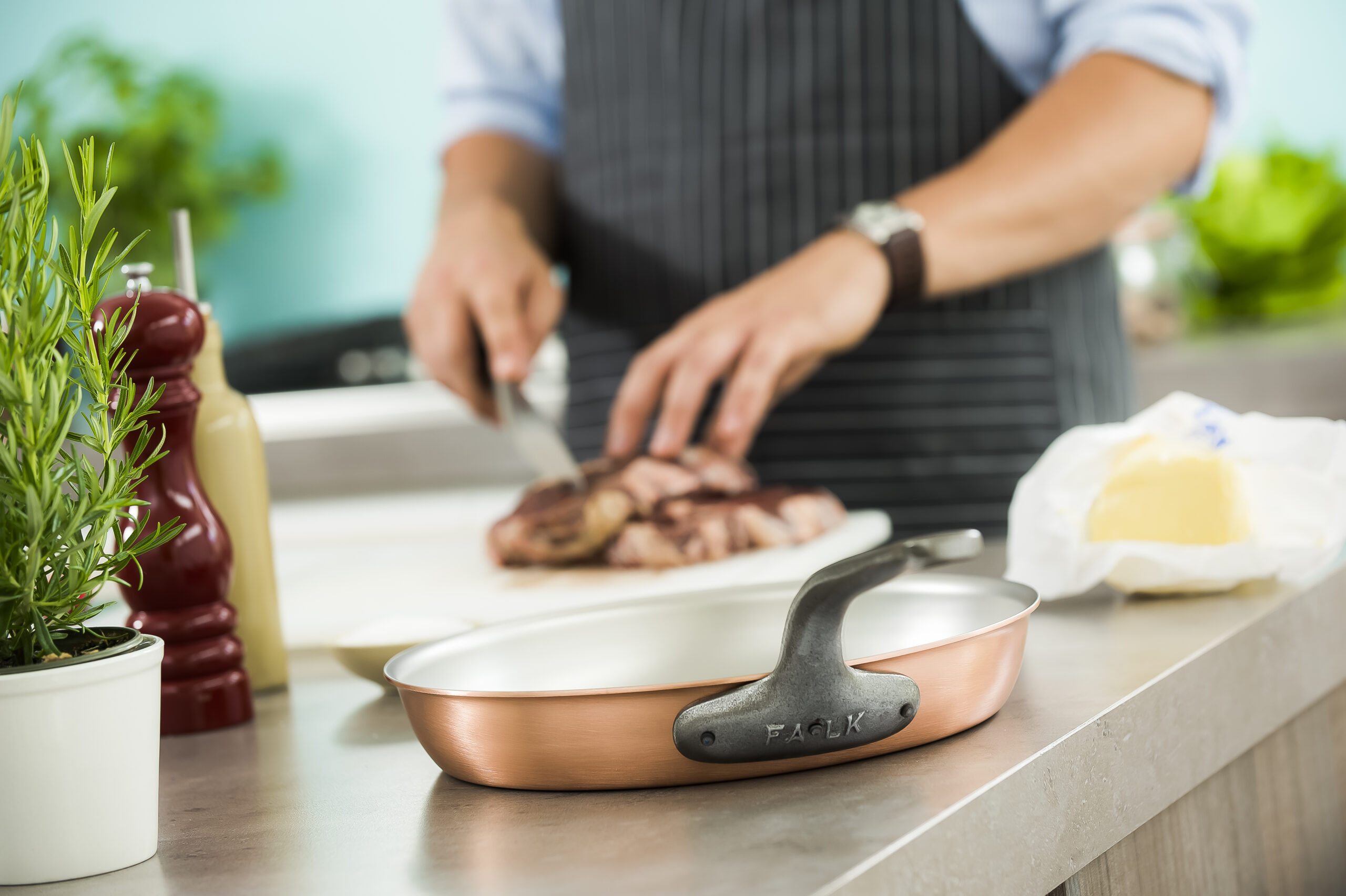“Searing is Scientific!” With any scientific endeavor, the proper tools are essential for success. Welcome to this month’s blog post! Today, we are searing a Ribeye steak and serving it with a side of roasted potatoes and broccolini. We’ll also talk about the Maillard reaction, and how it is responsible for creating the complex flavors, aromas, and textures associated with many cooked foods.
. One of the ways to a great steak is copper. The 11-inch Signature Frying pan from Falk Culinair cooked our Ribeye evenly (no hot spots) on the 11,000 BTU burner. The quality of this copper pan compliments the power of the Lacanche Range. It is a treat to see the range in use. The staff at headquarters regularly gets to enjoy the spoils of cooking videos, and we always learn a lot from the experience.
* Use our discount code “LacancheUSA” for 10% off full-priced item on Falk Culinair’s website
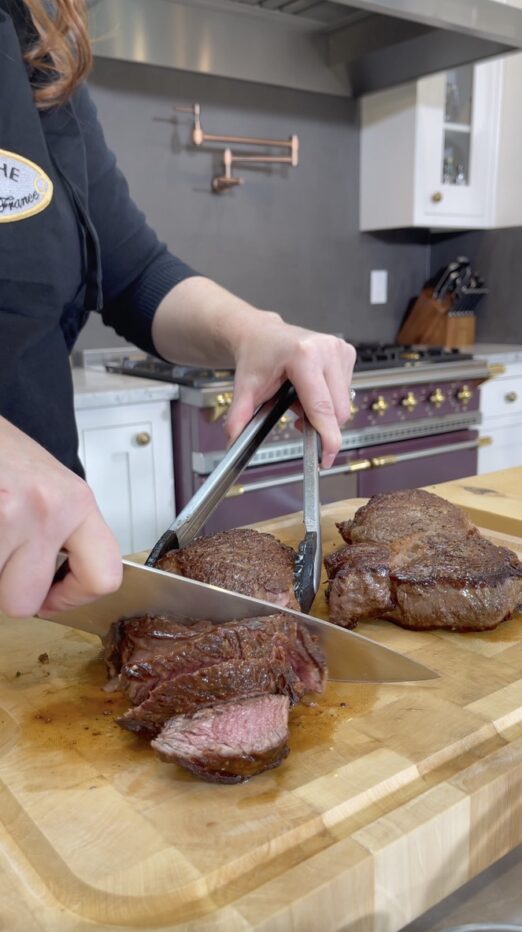
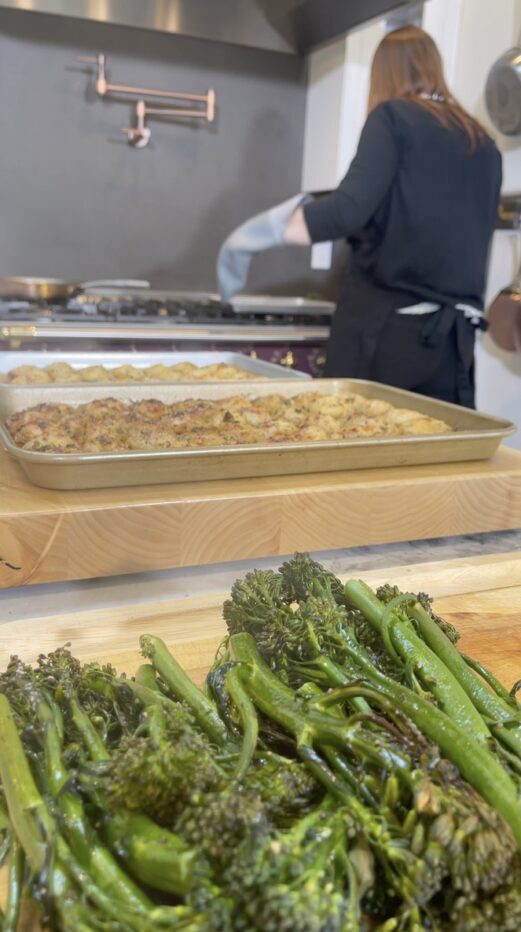
Heat & Meat
Steak and flavor is the desired pairing. But what is the secret?
. Searing is what creates the crust that gives steak its characteristic color and texture. Not only does it change the physical composition of the meat, but the process of searing induces a chemical reaction which releases new aromas and tastes. This flavor enhancement process is called the Maillard reaction and is what makes a well-seared steak much more delicious than a plain one. It occurs when amino acids and sugars naturally found in the meat are heated at a high temperature. While the Maillard reaction occurs naturally during cooking, there are several ways to optimize its effects for searing your meat:
- Bring Meat to Room Temperature – Cold steaks will lower the temperature of the cooking surface when contact is made. This hinders browning and lessens the potential of the Maillard reaction.
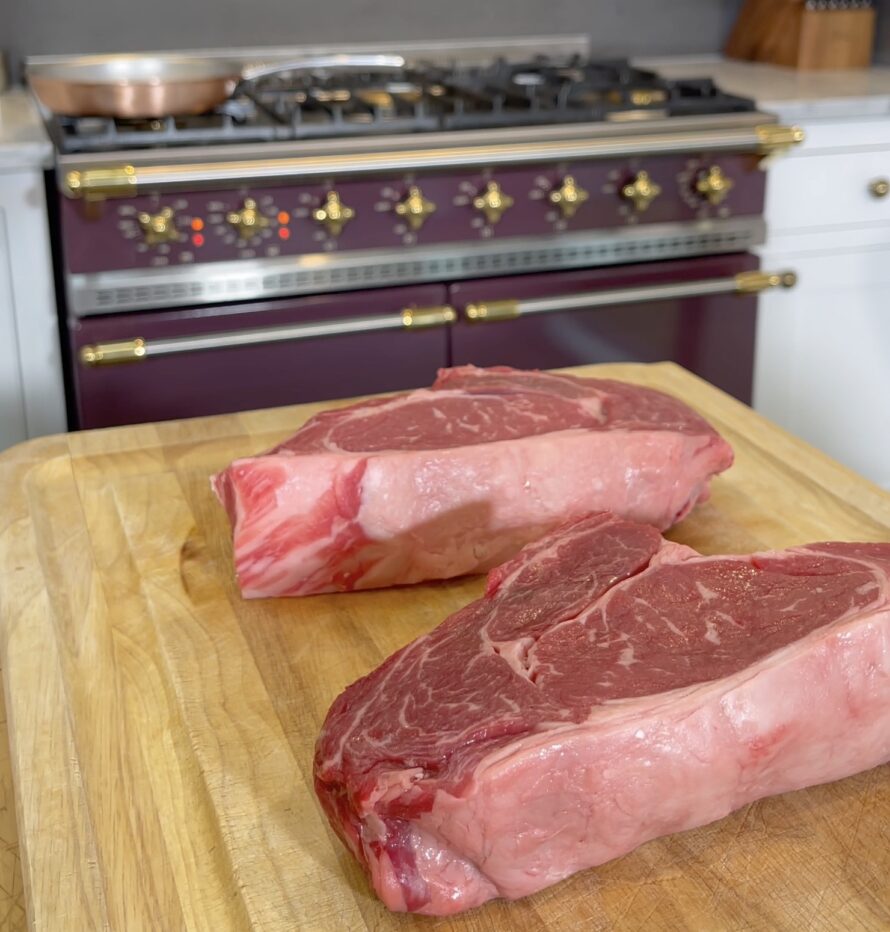
- Use Medium-High Heat – The Maillard reaction is most effective at temperatures upwards of 284°F (140°C). Preheating your equipment is a must. You want to make sure your steak is introduced to that high temperature as soon as it contacts the cooking surface. The 11,000 BTU burner on medium heat will accomplish this beautifully.
- Prevent Sticking – Using a thin layer of oil will help to prevent sticking and promote browning.
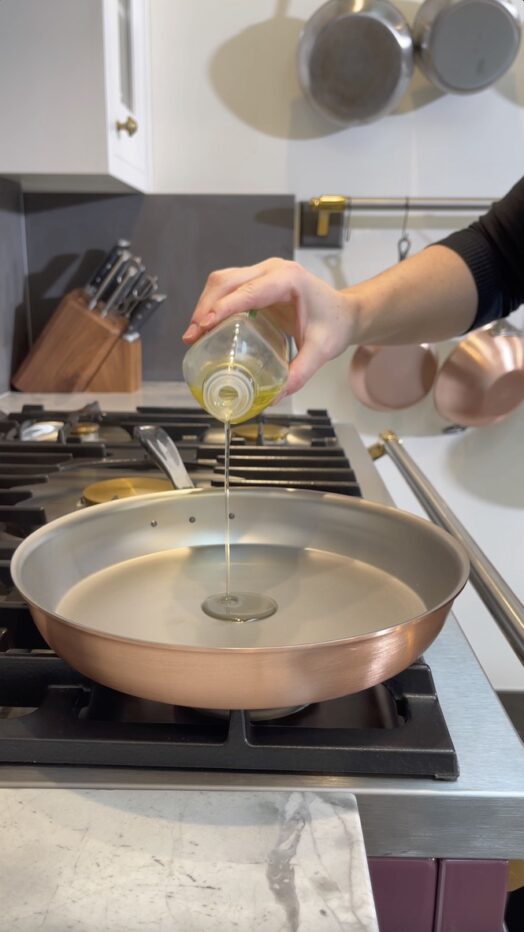
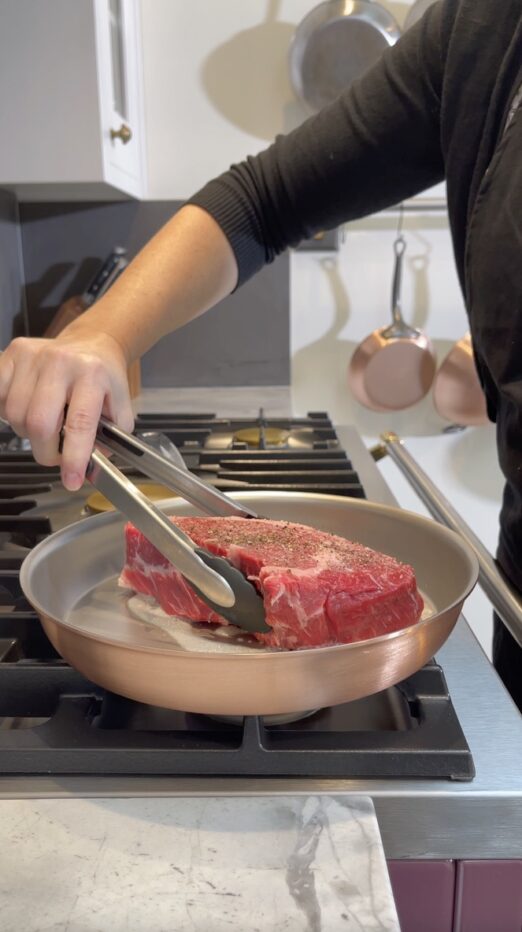
- Even Heat Distribution – This will allow for consistent, even browning and prevent sticking as well as burning of your meat. Avoid using tools that have hot spots; flavorful, brown crust can turn into a black, burnt mess if heat distribution is not properly controlled. Copper is the best heat conductor for cooking out there; it is known for heating quickly and evenly, aiding the Maillard reaction and giving the user more control over the process. It is because of this a copper pan was the tool of choice for this recipe.

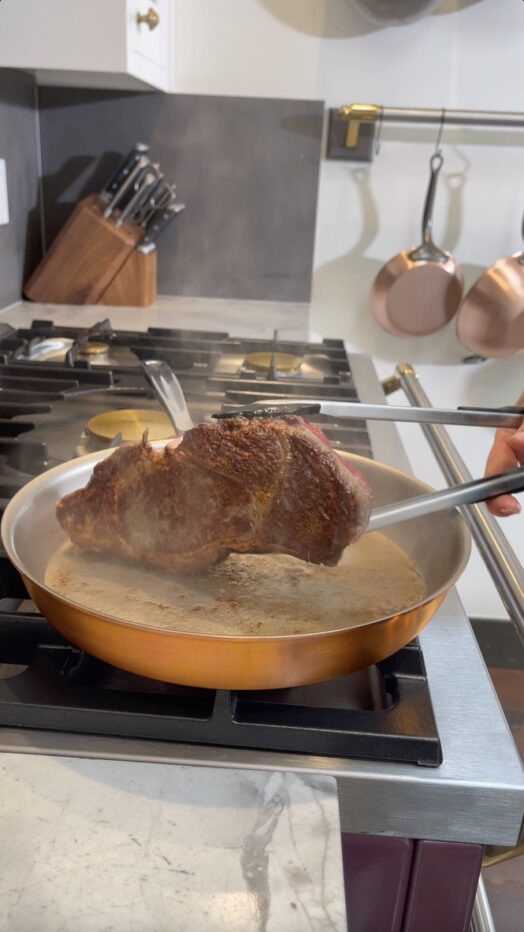
- Limit Moisture – The Maillard reaction is influenced by several factors, including water activity. With this, you should always dry your meat before searing. Pat the steak dry to remove excess moisture from the surface. Also, salt draws out moisture, so wait to salt meat until you are ready to cook it. Too much time between salting and placing the steak on the cooking surface will interfere with the Maillard reaction. Don’t overcrowd the pan; avoid steaming or boiling the meat to achieve ideal browning. Overcrowding causes the surface of the steak to steam rather than sear.
- Let It Rest – After searing, the steak should rest for at least 10 minutes to allow the juices to redistribute and the crust to set.
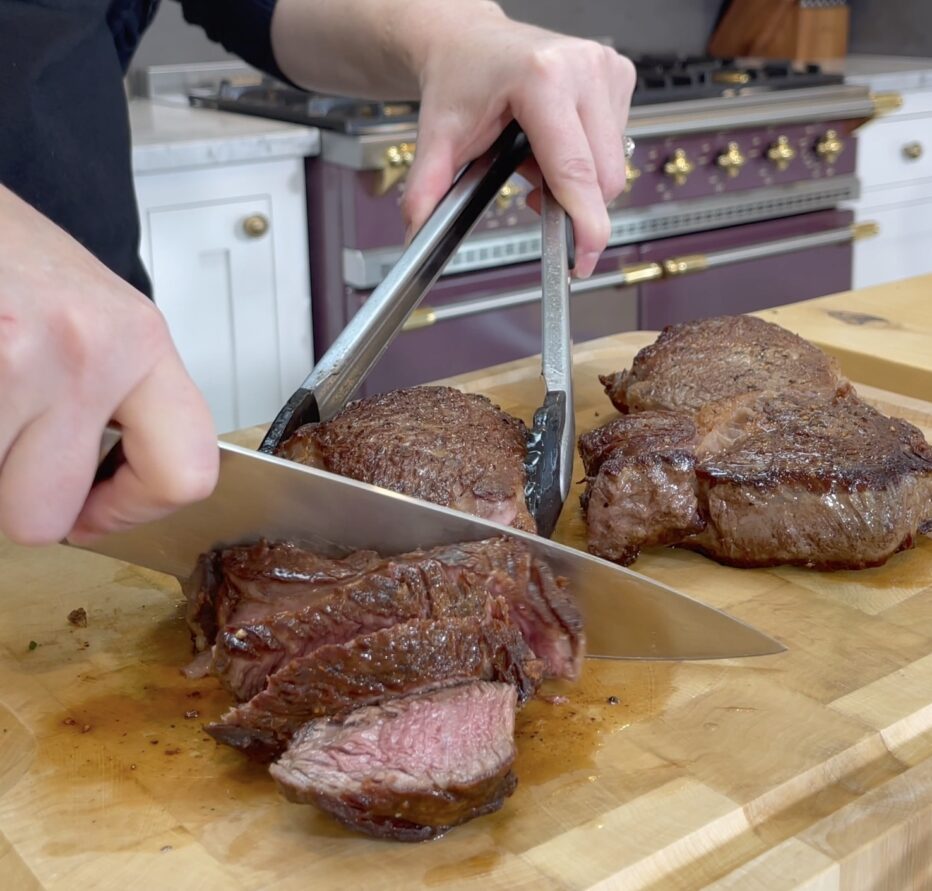
Watch our video to see the Millard reaction at work…
Seared Steak Video:
*Here is the recipe we adapted for the Garlic Steak Sauce as seen in the video: https://www.foodnetwork.com/recipes/trisha-yearwood/garlic-roast-beef-11926808 *Here is the recipe for the Roasted Parmesan Potatoes as seen in the video: https://moribyan.com/crispy-parmesan-roasted-potatoes/ *Roasted Broccolini was seasoned with oil, salt, and pepper to taste.
Remember…
. High quality cooking creates high quality experiences. By knowing the science behind cooking, and with the proper tools, the Maillard reaction can be used to its full potential. Now you can enjoy a beautifully seared steak à la Lacanche in the comfort of your own home, by bringing your family back to the table.
. Let us know how it goes in the comments below!


